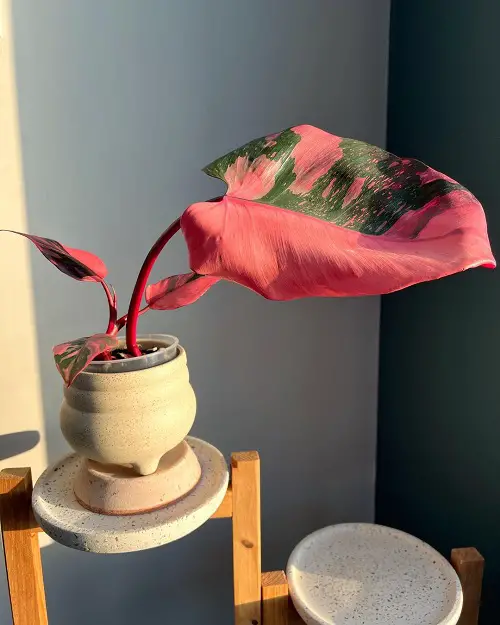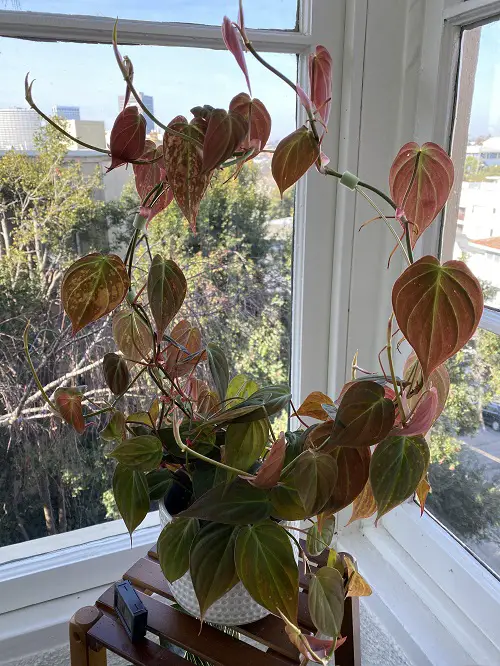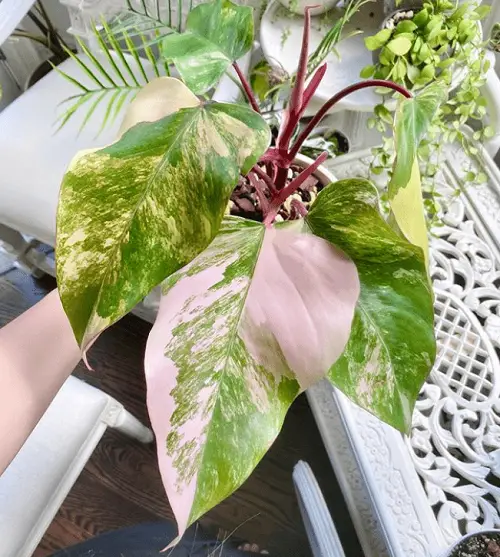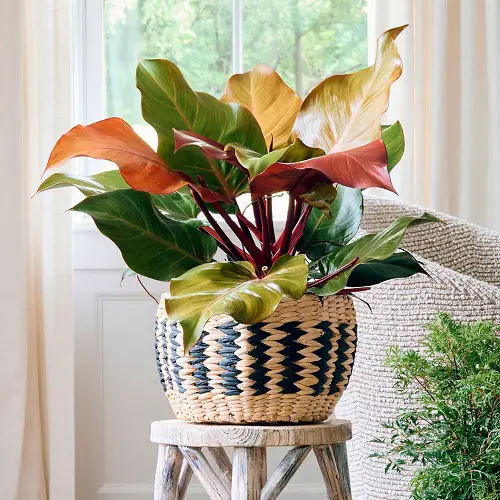Pink Philodendrons have a fantastic vivid hue that makes them stand out in any plant collection! Here are the best ones!
Pink philodendron is so rare that if you will spot it anywhere, you’ll think that it is a fake one! The coloration on these plants is so beautiful, you’d want to have them in your collection, today!
Pink Philodendron Meaning
The term “Philodendron” is taken from the Greek words “philos,” which means love, and “dendron,” which means tree. This amalgamation of love and growth makes Pink Philodendrons a symbol of affection and personal development, making them a perfect gift for expressing care or celebrating personal milestones..
Best Pink Philodendrons
Do note that some of these plants may not be entirely pink, and may have some splotches or hues of pink on the leaves. The coloration is due to pigments present in the foliage.
1. Philodendron ‘Pink Princess’

This one is the quintessential when it comes to pink philodendrons, and stands out with its massive leaf size, adorned in the pink shade that may appear as splotches, streaks, or even cover entire foliage.
2. Philodendron ‘Pink Congo’

If you like bright hues, then is the one to go for. The coloration has a neon effect to it, because it is done by the chemical treatment. As the plant matures, it fades and the leaves become green.
3. Philodendron ‘Micans’

These philodendrons sport a mixed hue of pink-red-maroon along with some leaves that have a tint of green to them. Keep them in bright, indirect light for best coloration.
4. Philodendron ‘Moonlight’
If being subtle is your liking, this plant will win your heart with its muted tones of white-pink and green. Do note that the coloration fades as the leaves mature.
5. Philodendron ‘McColley’s Finale’
The new foliage on this plant starts with a deep pink hue, with a certain red-copper undertone. The leaves maintain the color before finally turning green, as they mature.
6. Philodendron ‘Autumn’
This hybrid will stun you with two tones of pinks on its leaves. While some may have a matt finish, others may exhibit a deeper hue. The foliage transitions into green over time.





